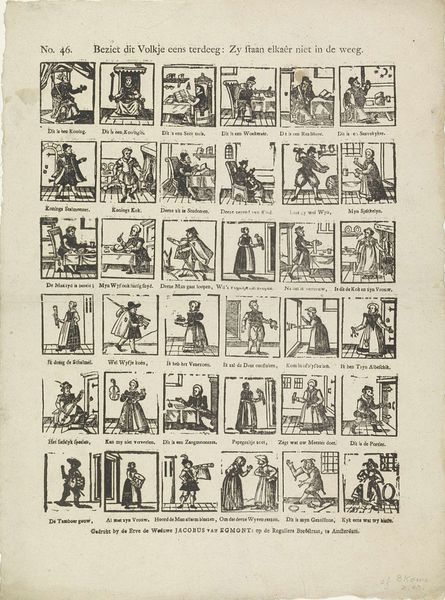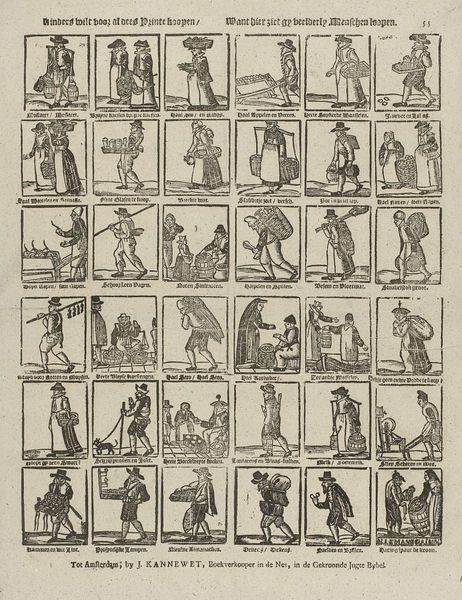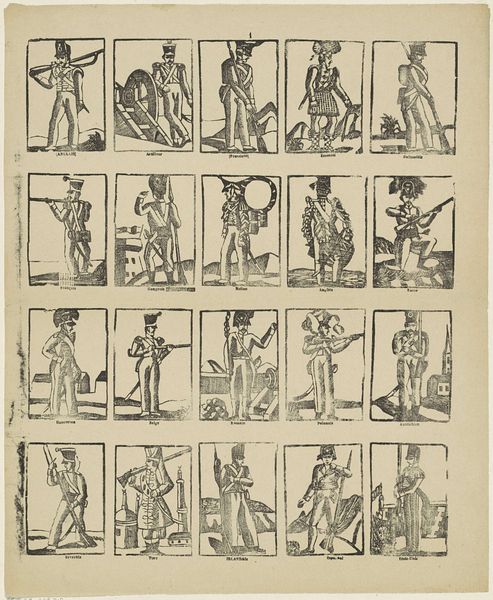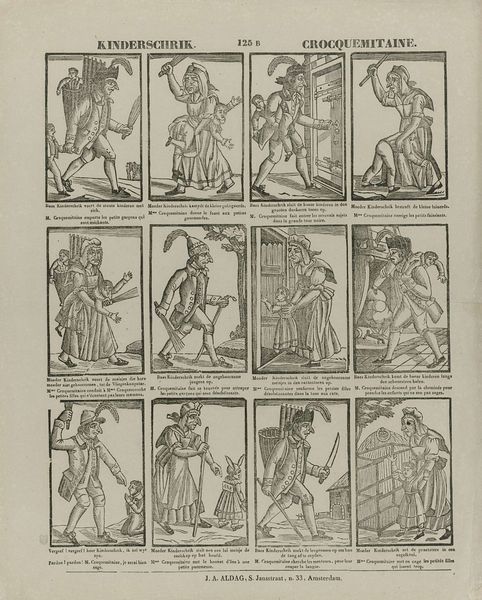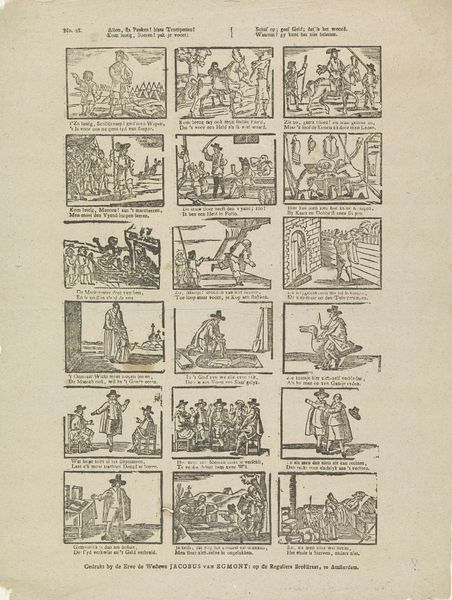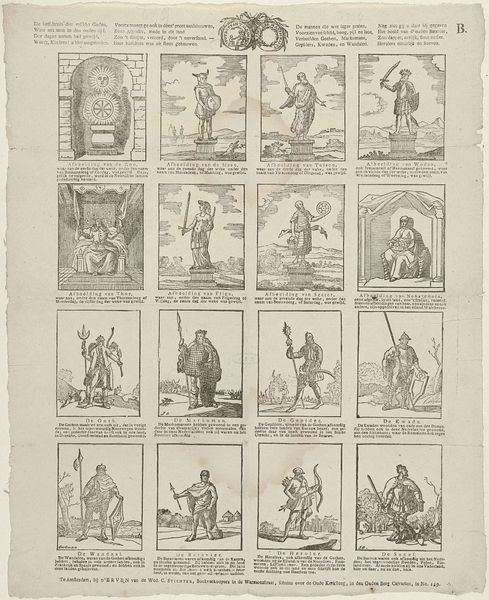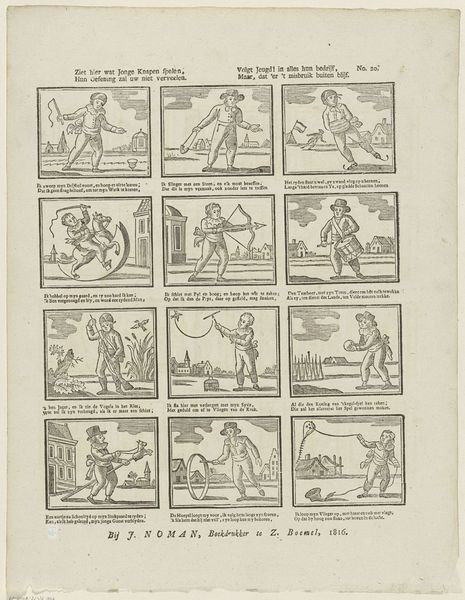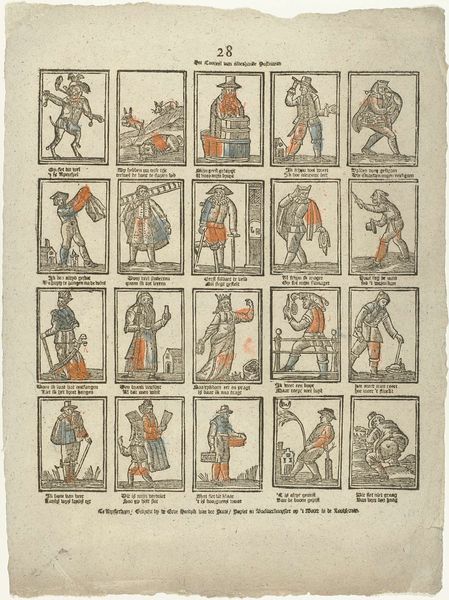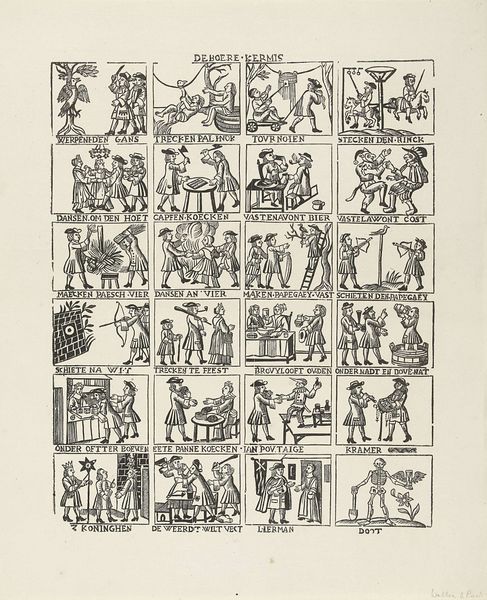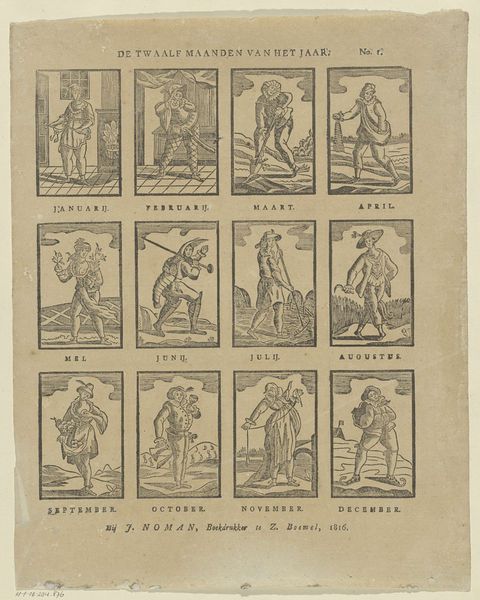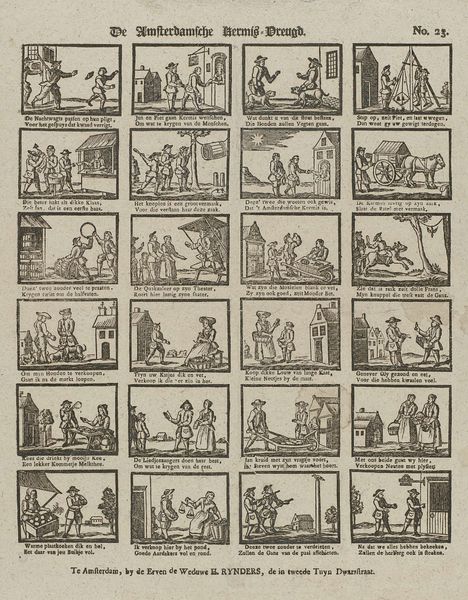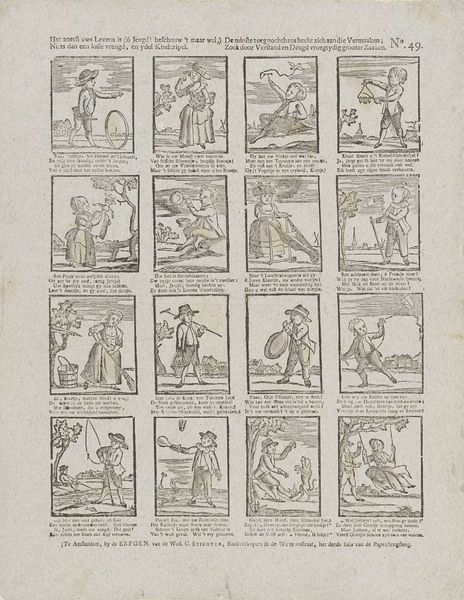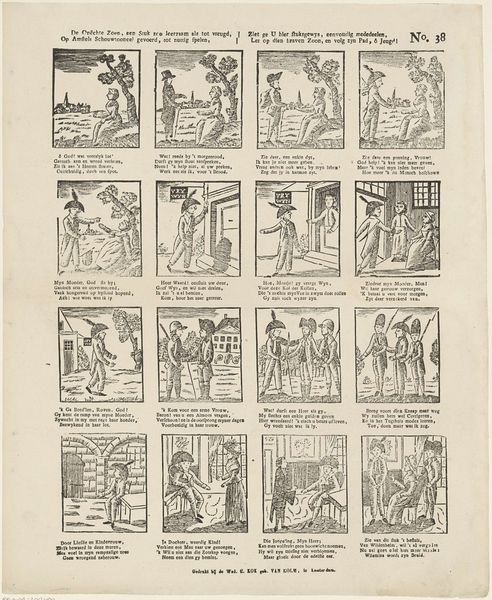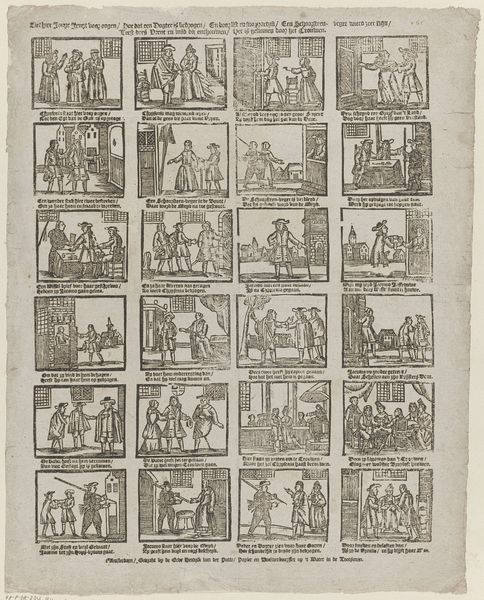
Beschouwt hier zoete jonge jeugd, dees herders en herderinnen met vreugd 1776 - 1813
0:00
0:00
graphic-art, print
#
graphic-art
#
comic strip sketch
#
light pencil work
#
quirky sketch
#
narrative-art
#
dutch-golden-age
# print
#
sketch book
#
personal sketchbook
#
idea generation sketch
#
sketchwork
#
sketchbook drawing
#
genre-painting
#
storyboard and sketchbook work
#
sketchbook art
Dimensions: height 410 mm, width 320 mm
Copyright: Rijks Museum: Open Domain
Editor: Here we have a print from sometime between 1776 and 1813 by Johannes Seydel entitled "Beschouwt hier zoete jonge jeugd, dees herders en herderinnen met vreugd" which translates roughly to: "Behold here sweet young youth, these shepherds and shepherdesses with joy." It is a simple print, a series of small scenes featuring pastoral figures. How do you interpret this work? Curator: This piece, appearing during a period of social and political upheaval, presents an idealized vision of rural life, doesn't it? Consider the historical context: the Dutch Golden Age was fading, and societal structures were shifting. What is striking to me is the simultaneous resistance to and escapism from the changes underway, evidenced in the repeated imagery of shepherds and shepherdesses. In a way, I see it as a longing for a simpler time. But, what are the politics inherent in this kind of idealization? Editor: Politics? I hadn't thought of it that way. It just seemed like a quaint scene. So you are suggesting the artist's choice to depict these idealized figures reflects a specific ideology? Curator: Precisely. Who gets to be a shepherd or shepherdess in art, and what does that represent? Are there other communities or social classes erased or marginalized through this pastoral fantasy? What’s missing? How might our reading change if these figures were not homogenous? Consider who benefits from romanticizing a return to nature, to the ‘simple life,’ especially in contrast to emerging industrial realities? Editor: I never really thought of art from the Dutch Golden Age and beyond in that light. I can definitely see the politics behind what is represented now, and what's *not* represented. Curator: Exactly. And, by understanding the power structures at play, we can better interpret the nuances within what may initially appear straightforward, revealing the complexities within artistic expression and its connection to social context.
Comments
No comments
Be the first to comment and join the conversation on the ultimate creative platform.
